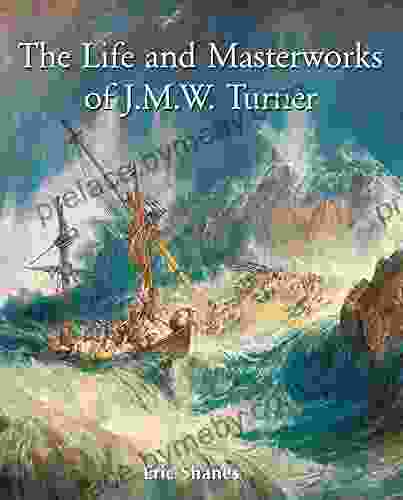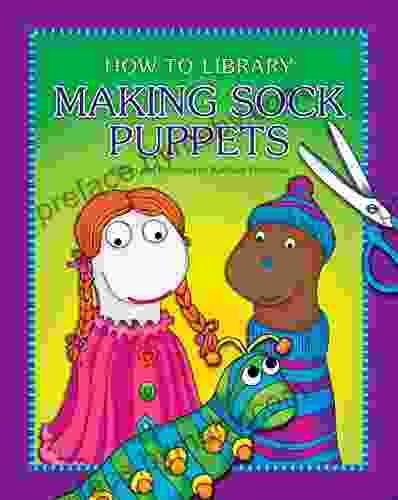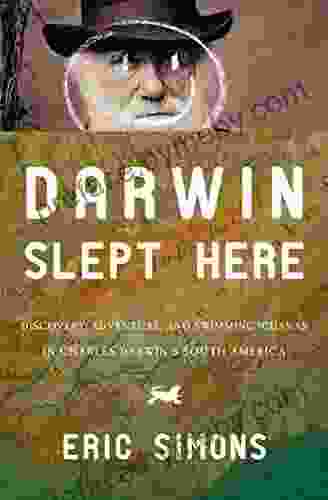Legends, Traditions, and Laws of the Iroquois or Six Nations and History of the Same

This book provides a comprehensive overview of the history, culture, and traditions of the Iroquois Confederacy, also known as the Six Nations. It covers their origins, laws, social organization, religious beliefs, and way of life. The book also includes a detailed account of the Iroquois' interactions with European settlers and the impact of colonization on their society.
4.2 out of 5
| Language | : | English |
| File size | : | 503 KB |
| Text-to-Speech | : | Enabled |
| Screen Reader | : | Supported |
| Enhanced typesetting | : | Enabled |
| Word Wise | : | Enabled |
| Print length | : | 155 pages |
| Lending | : | Enabled |
Table of Contents
- Chapter 1: The Origins of the Iroquois Confederacy
- Chapter 2: The Laws of the Iroquois Confederacy
- Chapter 3: The Social Organization of the Iroquois Confederacy
- Chapter 4: The Religious Beliefs of the Iroquois Confederacy
- Chapter 5: The Way of Life of the Iroquois Confederacy
- Chapter 6: The Iroquois Confederacy and European Settlers
- Chapter 7: The Impact of Colonization on the Iroquois Confederacy
Chapter 1: The Origins of the Iroquois Confederacy
The Iroquois Confederacy is a political and social organization that was formed by five Iroquoian-speaking nations: the Mohawk, Oneida, Onondaga, Cayuga, and Seneca. The Confederacy was later joined by a sixth nation, the Tuscarora. The Iroquois Confederacy is the oldest surviving Native American political organization in North America.
The origins of the Iroquois Confederacy are shrouded in legend and tradition. According to one legend, the Confederacy was founded by a great peacemaker named Deganawidah. Deganawidah traveled from village to village, preaching a message of peace and unity. He convinced the five nations to put aside their differences and form a single confederacy.
Chapter 2: The Laws of the Iroquois Confederacy
The laws of the Iroquois Confederacy were based on the principles of peace, justice, and equality. The Confederacy was governed by a Grand Council, which was made up of representatives from each of the five nations. The Grand Council met regularly to discuss and decide on important issues.
The laws of the Iroquois Confederacy were very comprehensive. They covered everything from property rights to criminal law. The Confederacy also had a system of courts to enforce its laws.
Chapter 3: The Social Organization of the Iroquois Confederacy
The Iroquois Confederacy was a matrilineal society. This means that descent was traced through the mother's line. Women had a great deal of power and influence in Iroquois society. They owned property, controlled the distribution of food, and had a say in the selection of leaders.
The Iroquois Confederacy was also a longhouse society. Longhouses were large, communal dwellings that housed extended families. Longhouses were typically built around a central fire pit. The fire pit was a symbol of the family's unity and strength.
Chapter 4: The Religious Beliefs of the Iroquois Confederacy
The Iroquois Confederacy had a complex system of religious beliefs. The Iroquois believed in a Great Spirit who created the world and everything in it. They also believed in a number of other spirits, including spirits of the animals, plants, and natural phenomena.
The Iroquois Confederacy had a number of religious ceremonies and festivals. These ceremonies and festivals were designed to honor the Great Spirit and the other spirits. They were also used to teach the Iroquois people about their culture and traditions.
Chapter 5: The Way of Life of the Iroquois Confederacy
The Iroquois Confederacy had a rich and varied way of life. The Iroquois people were skilled farmers, hunters, and fishermen. They also practiced a variety of crafts, including pottery, basketry, and woodworking.
The Iroquois Confederacy was a peaceful society. The Iroquois people valued peace and harmony. They avoided war whenever possible. However, the Iroquois Confederacy was also a powerful military force. The Iroquois were able to defend their territory from attack by other Native American tribes and European settlers.
Chapter 6: The Iroquois Confederacy and European Settlers
The Iroquois Confederacy had a complex and often difficult relationship with European settlers. The Iroquois were initially friendly to the settlers. However, as the settlers began to take over more and more of Iroquois territory, relations between the two groups deteriorated.
The Iroquois Confederacy fought a number of wars against the European settlers. The Iroquois were eventually defeated, but they were able to negotiate a number of treaties that protected their land and their way of life.
Chapter 7: The Impact of Colonization on the Iroquois Confederacy
The colonization of North America had a devastating impact on the Iroquois Confederacy. The Iroquois lost a great deal of their land to the settlers. They were also forced to adopt a new way of life. The Iroquois Confederacy was never able to fully recover from the impact of colonization.
However, the Iroquois Confederacy has survived to this day. The Iroquois people have adapted to the challenges of modern life and have retained their culture and traditions. The Iroquois Confederacy is a reminder of the resilience of the Native American people.
Legends, Traditions, and Laws of the Iroquois or Six Nations and History of the Same is a valuable resource for anyone who wants to learn more about the history, culture, and traditions of the Iroquois Confederacy. The book is well-written and engaging, and it provides a wealth of information on this fascinating subject.
4.2 out of 5
| Language | : | English |
| File size | : | 503 KB |
| Text-to-Speech | : | Enabled |
| Screen Reader | : | Supported |
| Enhanced typesetting | : | Enabled |
| Word Wise | : | Enabled |
| Print length | : | 155 pages |
| Lending | : | Enabled |
Do you want to contribute by writing guest posts on this blog?
Please contact us and send us a resume of previous articles that you have written.
 Book
Book Novel
Novel Page
Page Chapter
Chapter Text
Text Story
Story Genre
Genre Reader
Reader Library
Library Paperback
Paperback E-book
E-book Magazine
Magazine Newspaper
Newspaper Paragraph
Paragraph Sentence
Sentence Bookmark
Bookmark Shelf
Shelf Glossary
Glossary Bibliography
Bibliography Foreword
Foreword Preface
Preface Synopsis
Synopsis Annotation
Annotation Footnote
Footnote Manuscript
Manuscript Scroll
Scroll Codex
Codex Tome
Tome Bestseller
Bestseller Classics
Classics Library card
Library card Narrative
Narrative Biography
Biography Autobiography
Autobiography Memoir
Memoir Reference
Reference Encyclopedia
Encyclopedia Eric Coll
Eric Coll Lina Acevedo
Lina Acevedo Robert M Grant
Robert M Grant Enthralling History
Enthralling History Jennifer Carter
Jennifer Carter Eileen Morris
Eileen Morris Emily Easton
Emily Easton Mike Gibson
Mike Gibson Mark Rowlands
Mark Rowlands Emily Arnold Mccully
Emily Arnold Mccully Emilie Conrad Da Oud
Emilie Conrad Da Oud Eric Balchunas
Eric Balchunas Emily Chenoweth
Emily Chenoweth Morley Callaghan
Morley Callaghan Laurence J Kotlikoff
Laurence J Kotlikoff Elaina Garcia
Elaina Garcia Eleanor Drago Severson
Eleanor Drago Severson Elliott Vandruff
Elliott Vandruff Tim Travis
Tim Travis Veronica Dinkins
Veronica Dinkins
Light bulbAdvertise smarter! Our strategic ad space ensures maximum exposure. Reserve your spot today!
 Emilio CoxFollow ·15.6k
Emilio CoxFollow ·15.6k Henry JamesFollow ·18k
Henry JamesFollow ·18k Colin FosterFollow ·12.3k
Colin FosterFollow ·12.3k Natsume SōsekiFollow ·12.1k
Natsume SōsekiFollow ·12.1k Walter SimmonsFollow ·7.6k
Walter SimmonsFollow ·7.6k Randy HayesFollow ·8.6k
Randy HayesFollow ·8.6k Zadie SmithFollow ·12.2k
Zadie SmithFollow ·12.2k Eddie PowellFollow ·6.5k
Eddie PowellFollow ·6.5k

 Richard Adams
Richard AdamsGame Development with Rust and WebAssembly: A...
Are you passionate...

 David Baldacci
David BaldacciGendered Identity and Aspiration on the Globalized Shop...
: The Convergence of Gender, Identity, and...

 Natsume Sōseki
Natsume SōsekiFresh Eyes On Panama: A Captivating Exploration of a...
Panama, a country often overshadowed by its...

 Adrian Ward
Adrian WardThe Life and Masterworks of J.M.W. Turner: A Timeless...
The Man Behind the Masterpieces ...
4.2 out of 5
| Language | : | English |
| File size | : | 503 KB |
| Text-to-Speech | : | Enabled |
| Screen Reader | : | Supported |
| Enhanced typesetting | : | Enabled |
| Word Wise | : | Enabled |
| Print length | : | 155 pages |
| Lending | : | Enabled |
















